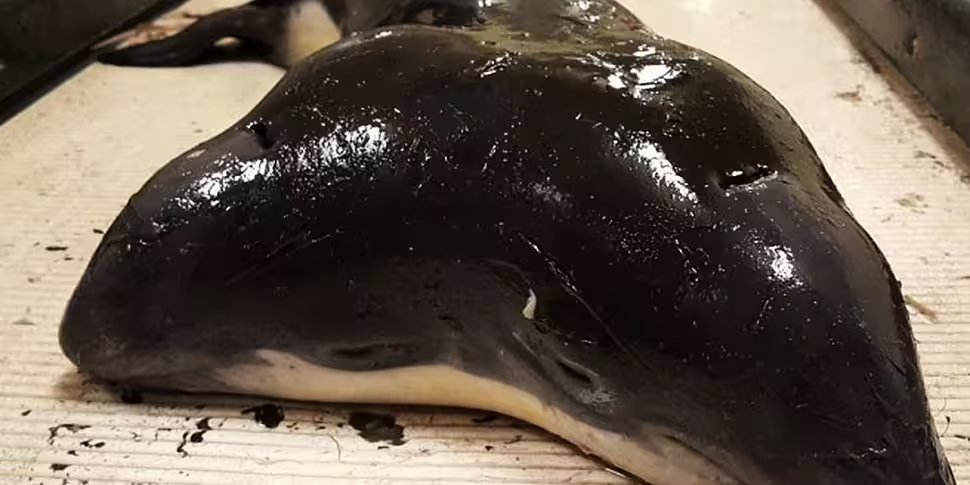Last month, the crew of a Dutch fishing trawler was out on the North Sea. Noticing a baby porpoise caught up in one of their nets, they dragged it out of the water, discovering it was dead. That wasn’t their only discovery, as they found the porpoise to have been born with two heads.
Concerned that keeping the marine mammal would be outlawed by fishing regulation, the fishermen tossed the creature back whence it came, throwing away the first ever recorded two-headed porpoise into the cold depths of the sea.
But before they chucked it back, they took photographs of it, alerting marine biologists to their extremely rare find after returning to shore. The two-headed porpoise, which was actually a set of conjoined twins, was recently described in a paper published in the Online Journal of the Natural History Museum Rotterdam.
Based on the photographic evidence, the study scientists have concluded that the twin porpoises were male and had been born not long before they were caught in the netting. Their dorsal fins were not yet erect, their umbilical opening had not sealed, and both heads had hair on their rostra (beaks), all indicative that they were newly born.
Scientists believe they would likely have perished shortly after making it out of the womb.

Writing on Live Science, Thia Gose points out that the porpoise twins had two fully-formed heads, two pectoral fins, a sole genital opening, and one fully-formed body. Based on the images taken by the fishermen, marine researchers reckon they were symmetrically conjoined, which is believed to take place when two separate embryos fuse or when a single one fails to split completely.
The birth of twins is a rare occurrence for cetaceans, the marine mammal order counting whales, dolphins, and porpoises. But the birth of conjoined twins is almost unheard of.
Erwin Kompanje, the mammalian curator at the Rotterdam Natural History Museum said that adult females are typically too small to carry more than one foetus. While exact numbers of conjoined twins are impossible to tell, in recorded scientific history there have been only nine cases of conjoined cetacean ever reliably documented. The majority of those were discovered gestating in the remains of dissected females.
Although the researchers were able to gather some information from the photographs, the loss of the specimen was sorely felt, with Kompanje telling The Washington Post he does not expect to encounter another set in his lifetime.
“For a cetologist, this is a real horror,” he said.









